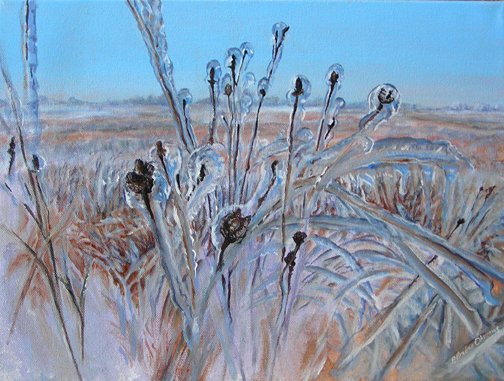Ding Darling Gallery
In October 1997, the Prairie Learning Center temporary gallery was dedicated as the J.N. Ding Darling Gallery in an event celebrating Darling's connections to Iowa and the Fish and Wildlife Service. The dedication featured twelve framed Darling works, including cartoons, duck stamps and etchings on permanent loan to the Center from the J.N. Ding Darling Foundation.
Since then, the galley displays pieces from several local artists during the year. The gallery is open when the Visitor Center is open. The gallery is located to the left of the main visitor center doors.
The purpose of the gallery is to:
Encouage personal involvement with the Refuge
Showcase nature photography, paintings, and fine art
Some items may be for sale
Pam Ohnemus
Current Display
“Prairie Grandeur”
Biography
I was born in Ashcroft, British Columbia, Canada in 1958 and became a naturalized US citizen in 1999. I graduated from Marshalltown, IA High School in 1976. I received my BA from the University of Northern Iowa in Art Education in 1980. I completed my MA from Western Illinois in 1999. I taught Art in the Davenport School District from 1980- 2013. I now teach acrylic painting classes at the Figge Art Museum.
Work Statement
The natural landscape has always been a powerful focus of my work. Currently I am conducting on-site research at local prairies, depicting the landscape in paint. Prairies have been reduced to isolated fragments that require conservation and preservation. Less than 1% of the presettlement tall grass prairie remains.
Macro and microenvironments fill my paintings, engaging the viewer in their detail. Even while painting tranquil scenes, I achieve active color sensations by layering color over complementary underpaintings. My paintings express delicate sensations through subtle texture and natural pattern.
The tall grass prairie is an irreplaceable tapestry of plant and animal life. I paint dynamic compositions of Midwest prairie remnants so that the viewer can appreciate and see the need of their preservation before they are lost forever.







